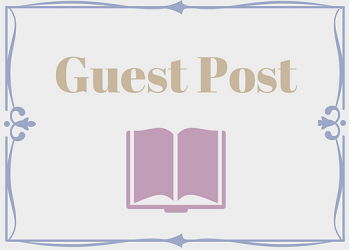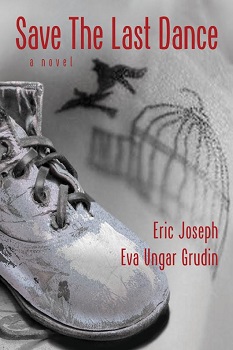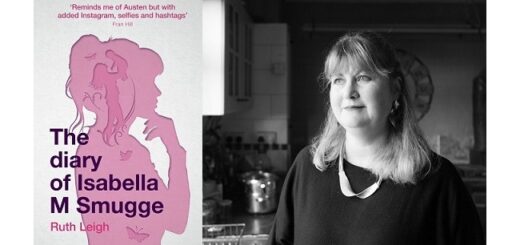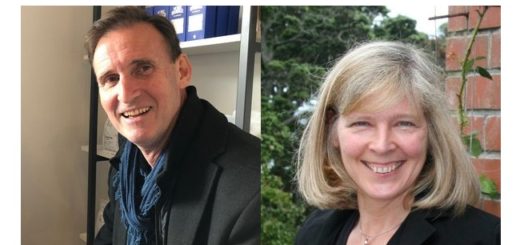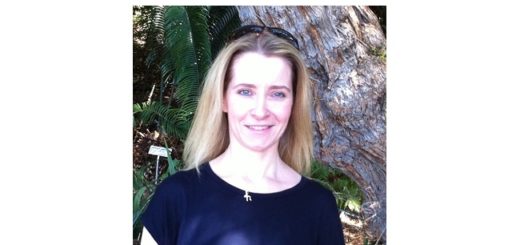What We Wrote for Love by Eric Joseph and Eva Grudin – Guest Post
What We Wrote for Love by Eric Joseph and Eva Grudin – Guest Post
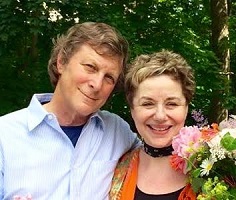
Eric Joseph and Eva Grudin have just published their debut novel at age 71: SAVE THE LAST DANCE: A NOVEL. Eric and Eva were teenage sweethearts in Cleveland Heights, Ohio, who set a wedding date when they turned 15. The last time they saw each other they were 21- years old. Three years ago they reunited, around the time of the 50th high school reunion. Although their book is a work of fiction, it’s about a couple like them, who fall in love again, almost instantly, via email.
Eric is in public health, a consultant/educator at hospitals and clinics, concentrating his career on Native American health services across the country. Eva is an art historian who taught at Williams College in Massachusetts for 40+ years. She specialized in African and African-American art; also Holocaust Studies – memorials and museums; In addition, she has performed in and written Sounding to A, a multi-media work about inheriting the Holocaust. It premiered at the Ko Festival of Performance in 2004.
Learn more about Eva and Eric and their history together by visiting hargrovepress.com – At the website you’ll find memories about their time together in the late 50s, early 60s, as well as interviews from today. On the website you’ll find a continually updated listing of the stops on the book tour this fall – Cleveland, Boston, Chicago and stay tuned . . .Post contains affiliate links.
What We Wrote for Love
Three years ago, when we reconnected after almost fifty years apart, neither Eric nor I had anything in mind except for a sweet chance to say “hi” and “I’m glad you’re still alive and well”. We were both married. It was all on the up and up. I certainly had no thought of ever seeing Eric again, not at 68 when he last saw me at 21. No way! So began an innocent correspondence between two older people who had been inseparable for most of their teenage years.
Eric and I exchanged three emails the first day, four the second, twenty-three the third day, and so it went. Open, honest letters. (Sometimes it’s easier to open up to a stranger than to someone who knows you, isn’t it?) Eric and I were caught in this odd situation – strangers to each other and, at the same time, intimate old friends who trusted each other totally. Our correspondence included nostalgic memories – how we’d signal ILU across the room in English class – how I had to drop out of honors geometry because I had let him do all the homework for me. Then came reflections, confessions and musings. I told Eric how happy I was to have this chance to tell him how deep inside me he’d lived. He wondered if it could be true that his best relationship was when he was 15, with me.
It’s difficult to remember when these emails became the foundation of a book, but it happened quickly – a week into our correspondence. The exchanges seemed so literary. I talked about how much I always liked letters – diaries – epistolary novels, just correspondence where you could eavesdrop on relationships. We should try writing a novel all in emails. I reminded Eric that I last knew him well when he was 18, the editor of the high school literary magazine, the author of several short stories and even a novel at 15. He was a born writer. So we alighted on the idea of converting our emails into the beginning of a novel about people like us, though not us. The plot developed quickly as we imagined how a reunion like ours might transpire. Most of the book is fabricated, but we learned enough about human behavior under these circumstances that we know the story is “true”, even if it’s not always factual.
I’m not sure if, in the end, Eric and I would be together, had it not been for the book. It bonded us. The collaboration was seamless. Exciting. We wrote together. We wrote separately. In the end we passed every word by the other and shaped the prose jointly. We took turns writing the voices of different characters – invented some out of whole cloth – and laughed at their bumbling ways. One of the lucky benefits of writing the book – it allowed us to say things to each other indirectly, through our characters. Sarah Ross, the female lead, frequently talks self-consciously about her appearance now, at this age. She insists she remain invisible to her former boyfriend. Adam Wolf, Eric’s equivalent, keeps reassuring Sarah that he would like to see her, that he would love her any way she came. “No,” she would protest, “I’ve been cut and pasted so many times, with one botch after the other, that with me you’d be trading down.” But, ultimately Eric reassured me, through Adam’s words, that there were “no deal breakers”, that it was impossible for him not to love her/me, no matter what the current packaging.
More than half a year after we began writing, Eric and I finally did see each other. And we marveled, still do, that from the start, to each other, we looked the same as ever – unchanged. I think of it like this – how, when we look into a mirror, we tend to see some generalized self. I’m early middle-aged in the mirror. It’s only when I see a photographs of myself that I’m startled by how I’ve aged. Am I really 71 years old now? But I feel 18 again, rejuvenated by this unlikely second chance at first love. And equally amazing – to Eric I appear that young too – his girl, unchanged. Ageless. I see that rekindled love can be that potent.
Publisher – Hargrove Press
Pages – 360
Release Date – 27th May 2016
ISBN 13 – 978-0997504910
Format – ebook, paperback, hardcover

In Save the Last Dance the reader is allowed to eavesdrop on correspondence among people caught In an extraordinary situation- the sudden intrusion of long-ago love into the humdrum lives of older people.
Adam Wolf and Sarah Ross were teenage sweethearts who grew up in Cleveland Heights, Ohio in the late 50’s and early 60’s. They set a wedding date when they turned fifteen. The day came and went. For most of their lives the two were out of contact. With their 50th high school reunion approaching, Adam and Sarah reconnect. Email exchanges- after the first tentative “hi”, a deluge- five, ten- by the end of the week twenty emails a day. Soon Sarah admits, “All my life I’ve been looking for someone who loves me as much as you did.”
In their late 60s now, the couple are far apart geographically, but again inseparable, at least virtually. They feel ageless. Adam dances around the house, no longer “zombie-walking to Waldheim Cemetery. The two weave from nostalgia and reminiscences to plans and possibilities. They giggle and fantasize. They trust each other with secrets never revealed before.
Too soon harsh disapproval besieges the couple’s dream world. Adam is married to Lola, a frustrated and hypercritical wife. His employer, Amanda, grows aggressively, obsessively possessive of him. Divorced from her arrogant husband, Professor Harold Weinstein, Sarah has just entered into a relationship with Gordon, whom she once thought of as “a keeper”. Can Adam and Sarah’s newly-rebuilt romance withstand the pummeling from the people whose lives they’ve derailed?

